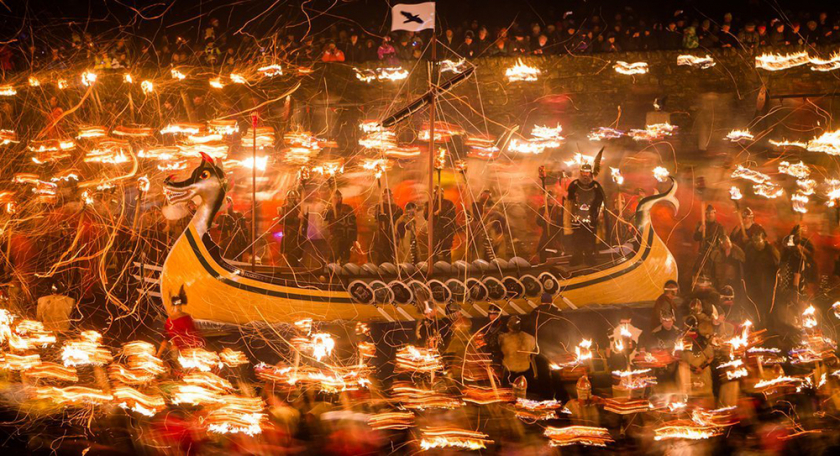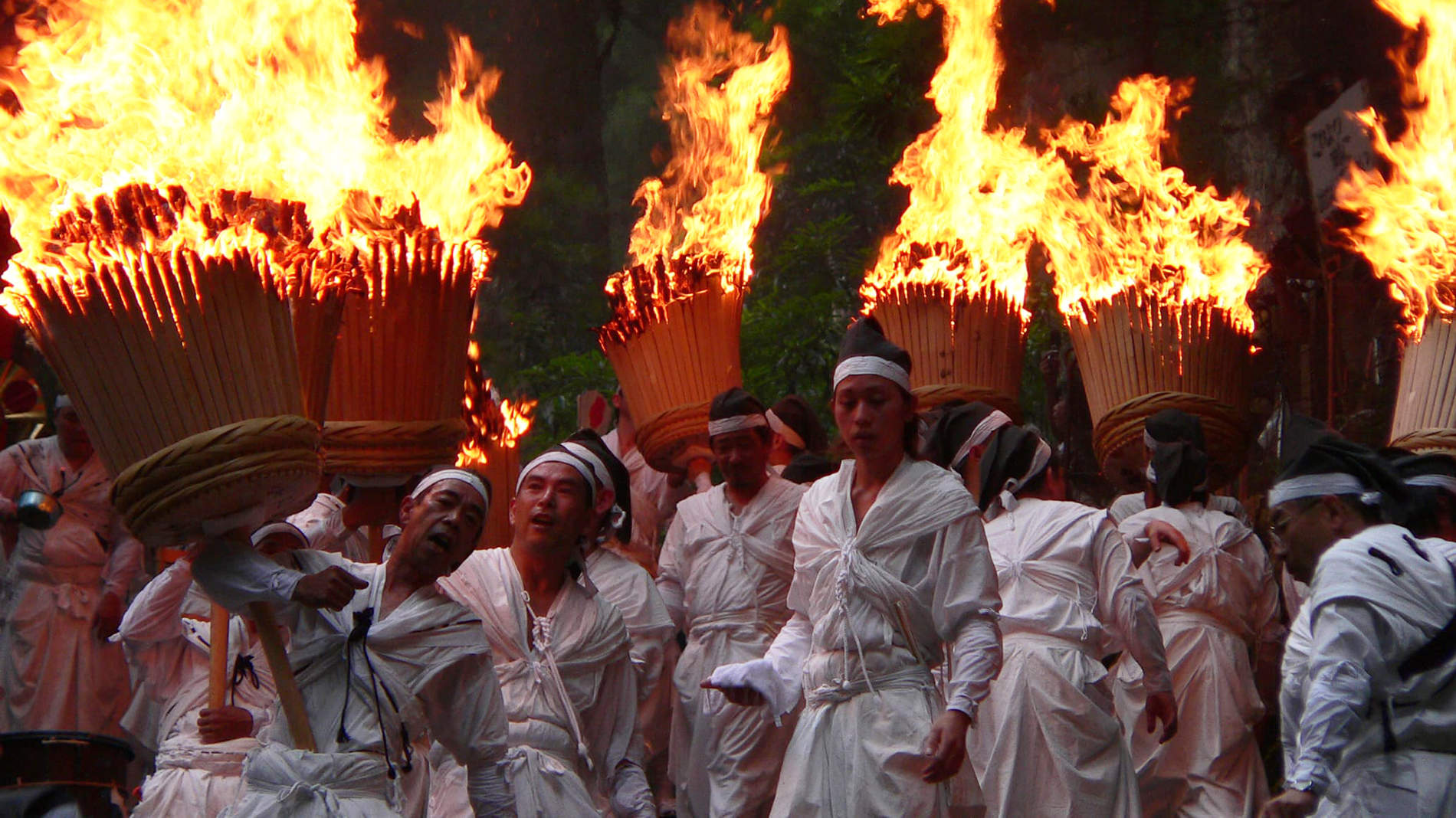Today, these activities are still carried out through fascinating festivals, with a focus on rituals involving the lighting of fires, torches, candles… to mark a special time of the year, to drive away unwelcome spirits, or to welcome the new year with a fiery rebirth. Most unique in this field is Japan – a country that holds many fire festivals, some of which are even “old” from 1,400 to 1,600 years.
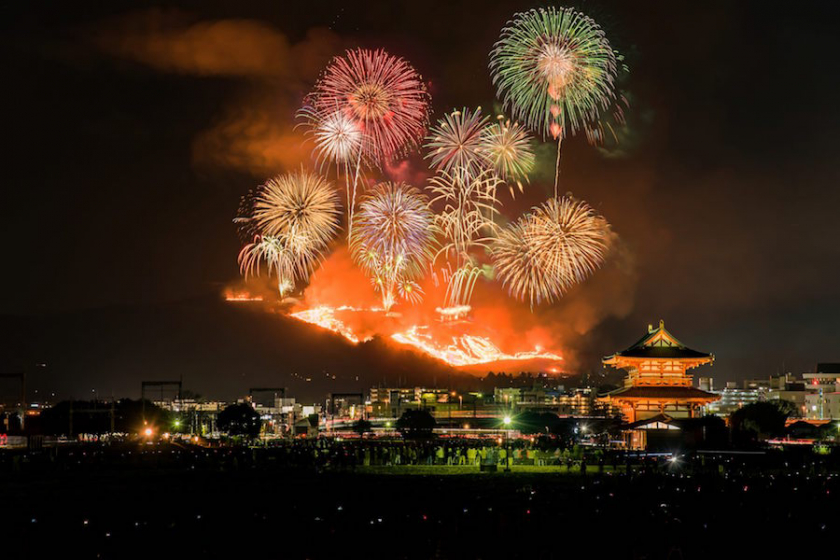
Held annually on the fourth Saturday of January in Nara Prefecture's capital, Nara, Wakakusa Yamayaki is a very exciting Fire Festival - after a spectacular fireworks display, the grass on Mount Wakakusa is set ablaze creating an "inferno" that can be seen from across the city. (Photo: Travel.co)
The prestigious American online travel magazine, Atlas Obscura, has selected and introduced some of the most impressive Fire festivals in the world, helping tourists to add them to their “must-visit” list for the New Year 2022 when they have the chance. The most notable include:
OTO FIRE FESTIVAL, JAPAN
Oto Matsuri (Oto Fire Festival) is an ancient festival with a history of over 1,400 years, one of the most lively and famous fire festivals in Japan. The Oto Fire Festival is associated with the ritual of purification and praying for a bountiful harvest, held on February 6 every year in Shingu City, Wakayama Prefecture, with a spectacular and impressive Fire performance.

Noboriko torches create a flowing “river” of red fire, likened to the image of a dragon flying down to earth, at the Oto Fire Festival, Japan. (Photo: Getty)
It is a spectacle of between 1,500 and 2,000 men dressed in white, called Noboriko, carrying torches lit from the sacred fire, running down the 538 stone steps of Kumano Hayatama Taisha Shrine. They create a flowing “river” of red fire, likened to the image of a dragon flying down to earth. Since the Oto Fire Festival first took place, little has changed, for example, the rule prohibiting women from going up the mountain on the day of the festival is still maintained.
Kumano Hayatama Taisha is one of the three important Kumano shrines (Shinto shrines dedicated to the three Kumano mountains of Hongu, Shingu and Nachi). Kumano Hayatama Taisha holds an important place in Japanese mythology.
ONIYO FIRE FESTIVAL, JAPAN
The Oniyo Fire Festival of Daizenji Tamataregu Temple in Kurume City, Fukuoka Prefecture, is a festivalTsuinato ward off evil spirits (Tsuina literally means "to drive away"). This tradition has been maintained by Daizenji Tamataregu Temple for about 1,600 years, and is one of the three largest fire festivals in Japan.
The Oniyo Fire Festival takes place every January 7. At 9 pm, a “demonic fire” that is guarded at the shrine is passed on to six giant torches measuring 15 meters long and 1 meter in diameter. These giant torches are then carried around the shrine by men wearing traditional Shimekomi loincloths. Onlookers and visitors are considered lucky if the torch ash falls on them.
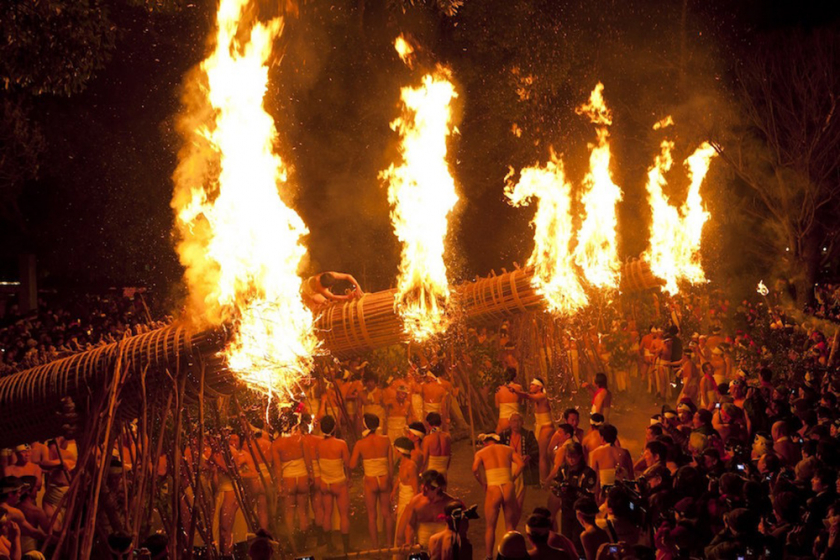
Six giant torches are carried by a crowd of men dressed in traditional Shimekomi loincloths around Daizenji Tamataregu Temple, during the Oniyo Fire Festival. (Photo: fravel.co)
LA QUEMA DEL DIABLO “DEVIL BURNING” FESTIVAL, GUATEMALA
In Central America, Guatemalans celebrate the traditional festival La Quema del Diablo (“Burning of the Devil”) every December 7 in the capital city of Guatemala City.
According to a tradition dating back to the 18th century, La Quema del Diablo is the official festival that kicks off the Christmas season, with the belief that burning wooden or paper effigies of the devil will erase the bad things of the past year. This ritual is to purify the process of Mary conceiving Jesus, and also to free him from all evil.
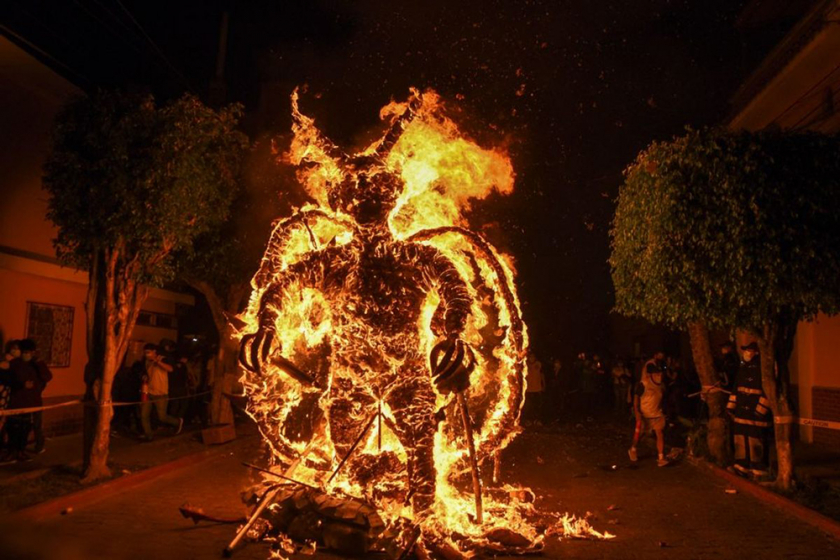
The ritual of burning an “effigy of the devil” to ward off evil spirits during the La Quema del Diablo (Burning of the Devil) Fire Festival in Guatemala City. (Photo: Getty)
POTTENSTAIN LIGHT FESTIVAL, GERMANY
The Pottenstain Festival of Light takes place every year on January 6, with thousands of fires lit by local residents on the grass on the slopes surrounding the town of Pottenstain in Bayreuth, Bavaria, Germany.
This tradition of lighting up the sky has been around for over 100 years, marking the end of the Eucharistic Adoration (a Eucharistic practice in Western Catholicism). In 2019, before the Covid-19 pandemic broke out, the Pottenstain Festival of Lights attracted over 10,000 visitors to experience it.
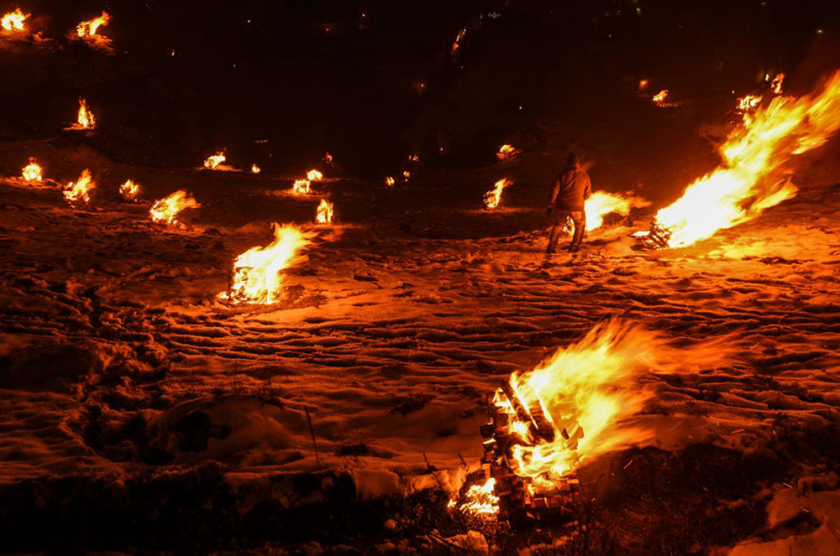
The unique Pottenstain Light Festival features thousands of open-air bonfires lit by local residents on the slopes surrounding the German town of Pottenstain. (Photo: Getty)
“UP HELLY AA” FIRE FESTIVAL, SCOTLAND
The Up Helly Aa Fire Festival is held annually from January to March in various communities in the Shetland Islands, located off the northeast coast of Scotland. The Up Helly Aa festivals mark the end of the Yule season (a winter period and religious festival). The largest of these, the Up Helly Aa Fire Festival, takes place on the last Tuesday of January in Shetland’s capital, Lerwik, and attracts thousands of participants as they parade through the streets.
Each “Up Helly Aa” Fire Festival is centered around a torchlight procession led by the Guizar Jarl squad. Guizar Jarl is the main leader of the modern-day festival, leading a team of people dressed as Vikings.
